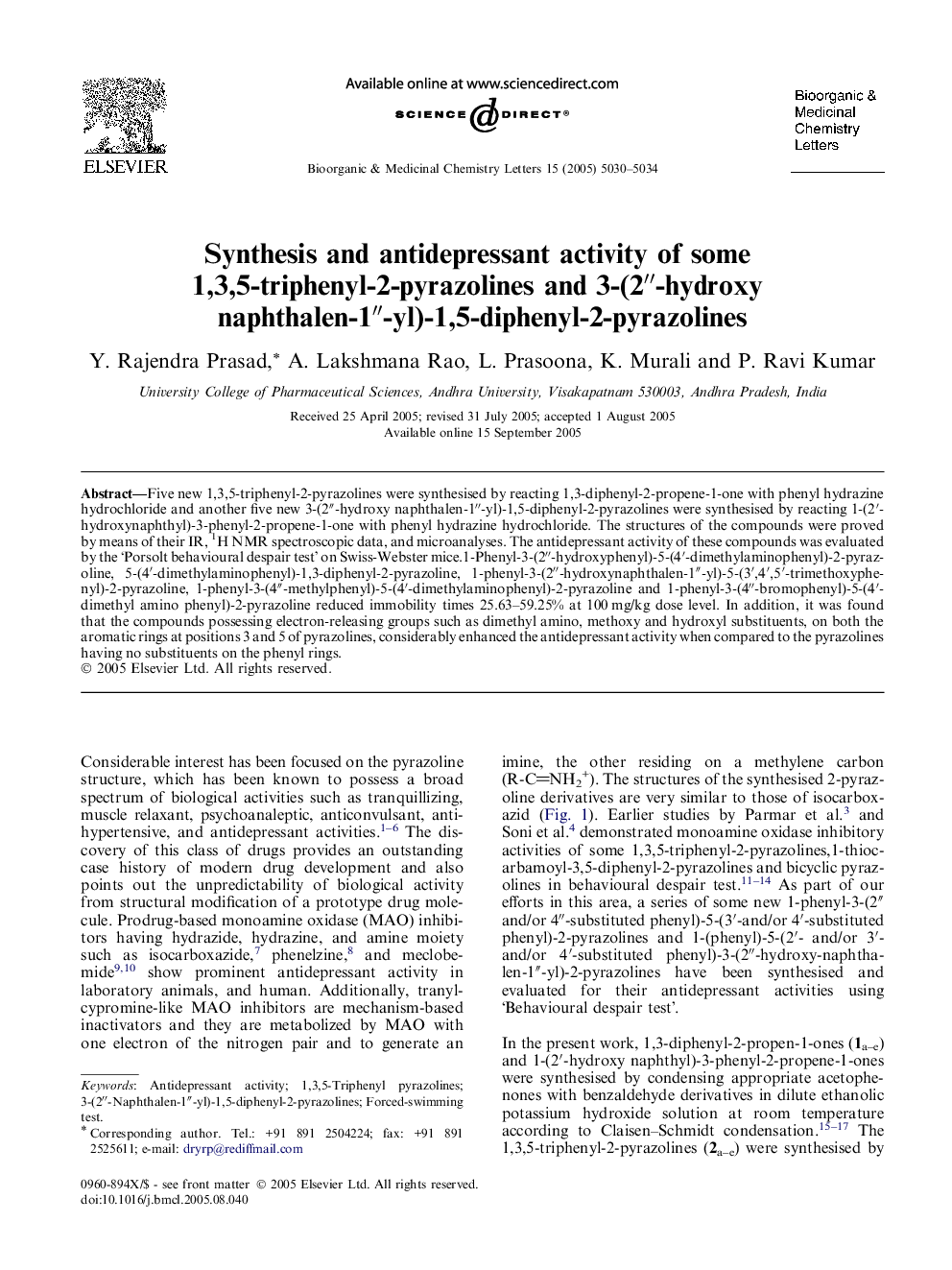| Article ID | Journal | Published Year | Pages | File Type |
|---|---|---|---|---|
| 1378216 | Bioorganic & Medicinal Chemistry Letters | 2005 | 5 Pages |
Five new 1,3,5-triphenyl-2-pyrazolines were synthesised by reacting 1,3-diphenyl-2-propene-1-one with phenyl hydrazine hydrochloride and another five new 3-(2″-hydroxy naphthalen-1″-yl)-1,5-diphenyl-2-pyrazolines were synthesised by reacting 1-(2′-hydroxynaphthyl)-3-phenyl-2-propene-1-one with phenyl hydrazine hydrochloride. The structures of the compounds were proved by means of their IR, 1H NMR spectroscopic data, and microanalyses. The antidepressant activity of these compounds was evaluated by the ‘Porsolt behavioural despair test’ on Swiss-Webster mice.1-Phenyl-3-(2″-hydroxyphenyl)-5-(4′-dimethylaminophenyl)-2-pyrazoline, 5-(4′-dimethylaminophenyl)-1,3-diphenyl-2-pyrazoline, 1-phenyl-3-(2″-hydroxynaphthalen-1″-yl)-5-(3′,4′,5′-trimethoxyphenyl)-2-pyrazoline, 1-phenyl-3-(4″-methylphenyl)-5-(4′-dimethylaminophenyl)-2-pyrazoline and 1-phenyl-3-(4″-bromophenyl)-5-(4′-dimethyl amino phenyl)-2-pyrazoline reduced immobility times 25.63–59.25% at 100 mg/kg dose level. In addition, it was found that the compounds possessing electron-releasing groups such as dimethyl amino, methoxy and hydroxyl substituents, on both the aromatic rings at positions 3 and 5 of pyrazolines, considerably enhanced the antidepressant activity when compared to the pyrazolines having no substituents on the phenyl rings.
Graphical abstractThe synthesis of different substituted 2-pyrazolines from the corresponding chalcones by condensation with phenyl hydrazine hydrochloride is reported. The chalcones employed in this reaction were prepared by condensing appropriate acetophenones with benzaldehyde derivatives in dilute ethanolic potassium hydroxide solution. Majority of the compounds synthesised possessed significant antidepressant activity in mice (P < 0.05) in the Porsolt behavioural despair test.Figure optionsDownload full-size imageDownload as PowerPoint slide
